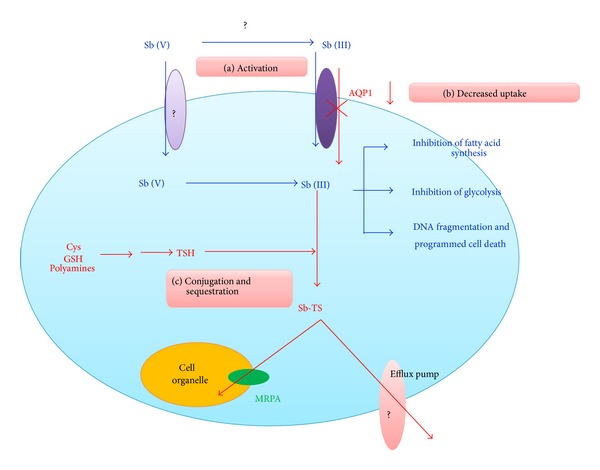Figure 1.

The mechanisms of antimony resistance in Leishmania. (a) Activation: conversion of Sb (V) to Sb (III) is inhibited in R-cells. This inhibition can either occur extracellularly (by inactivation of enzymes still unknown) or intracellularly (by inhibition of enzymes like ACR2 or TDR1). (b) Decreased uptake: decreased expression of AQP1 reduces Sb uptake into the cell thus conferring resistance. (c) Conjugation and sequestration: increased thiol levels (like cysteine (Cys), GSH, TSH, and polyamines) in the cell result in its conjugation with antimony to form antimony-thiol complex (Sb-TS) which then results in sequestration of the complex into a cell organelle or extrusion from the cell thus lowering intracellular amount of antimony. Blue lines indicate the probable drug action in sensitive Leishmania strains while red lines depict the probable routes to achieve resistance as observed in resistant cells.
